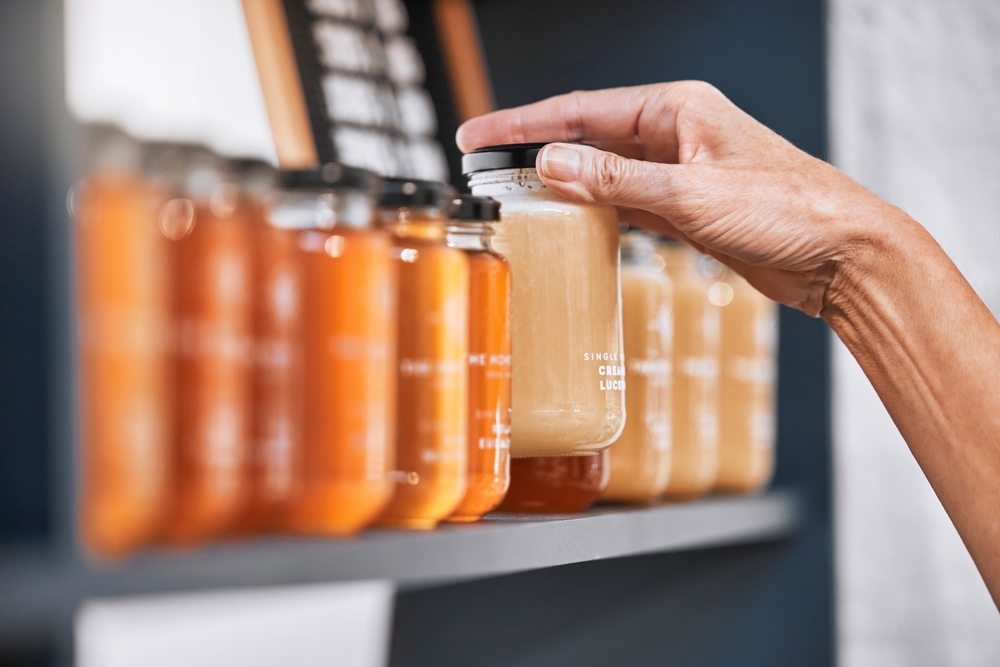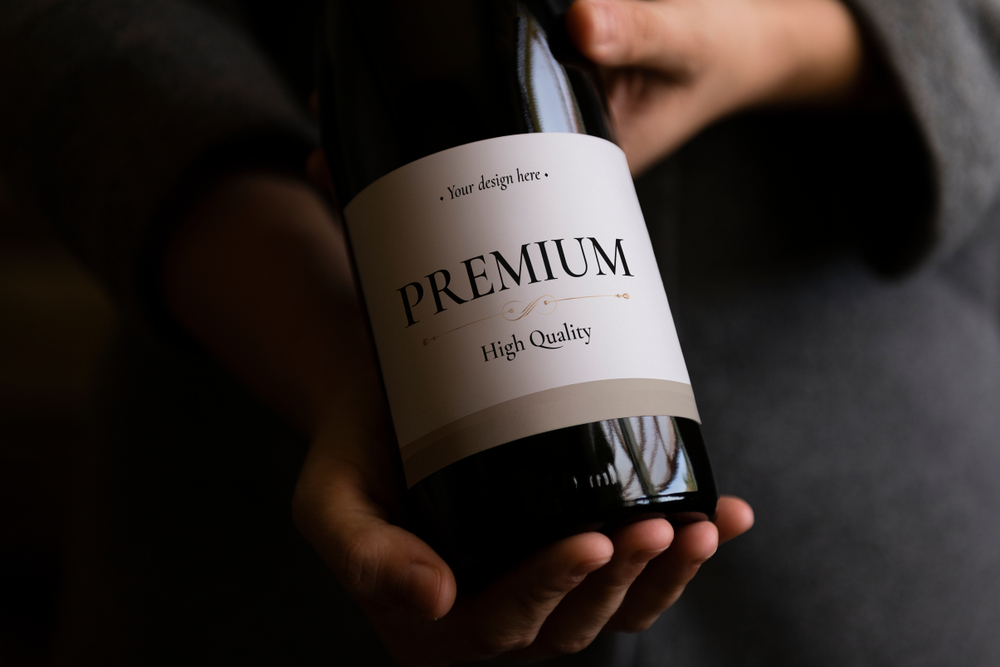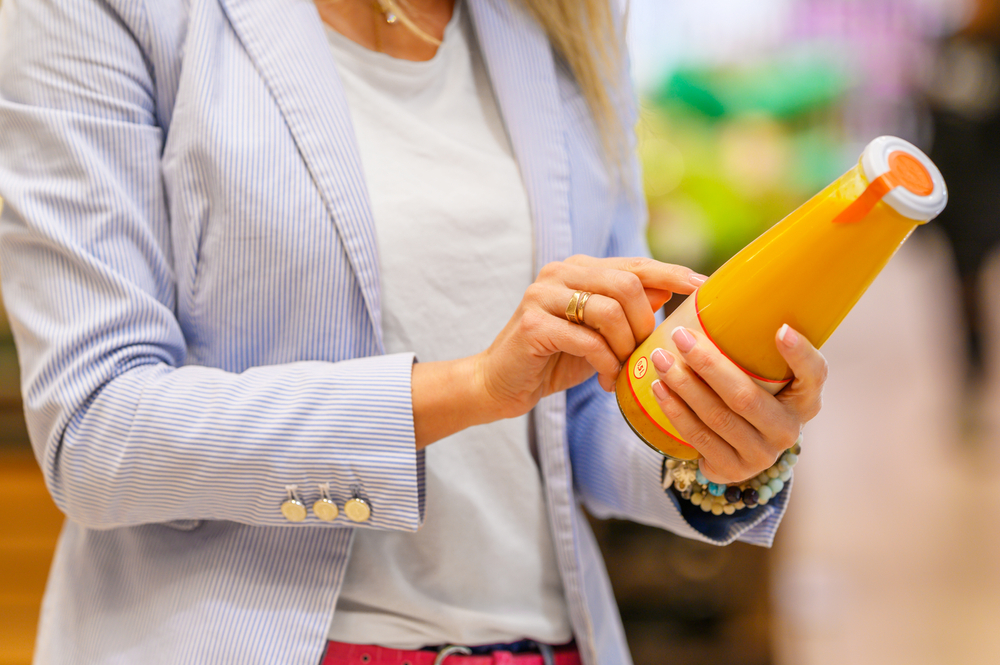In the competitive world of retail, capturing a consumer’s attention is paramount. A product’s packaging, specifically the label, plays a significant role in making products stand out on the shelf. An influential label can be the difference between a sale and a pass. We will explore strategies brands can adopt to maximize shelf appeal through standout product labeling, providing actionable insights for brands looking to enhance their packaging design.
How Shelf Appearance Appeals in Product Packaging

What is Shelf Appeal
Shelf appeal refers to how attractive a product appears to consumers when it is displayed on a store shelf. The first impression can either draw a customer in or blend in with the other products on the shelf. Various factors, including design, colors, and the overall look of the packaging, influence this appeal. Because the market is crowded with choices and a consumer is looking to make a big decision, packaging often makes a product stand out. The more eye-catching and memorable a product, the better its chances of being chosen over competitors. Shelf appeal is not just about aesthetics; it’s about communicating the value and quality of the product at a glance.
The Role of Product Labels
Product labels are a critical component of shelf appeal. Labels are often the first point of contact between the product and the consumer, making them a powerful tool for branding and marketing. They convey essential information about the product and serve as a key marketing tool. A well-designed label informs and entices consumers, making the product stand out from competitors. Signs of an effective label combine visual appeal with clear, concise information, ensuring that consumers can easily understand what the product offers and why it’s worth purchasing.
Key Strategies for Standout Product Labeling
Research and Understand Your Target Audience
Before diving into the design aspects, it’s crucial to understand who your consumers are. Conduct market research to gather insights into their preferences, buying behaviors, values and beliefs, paint points, and, of course, what appeals to them visually. This information will guide your labeling strategy, ensuring it resonates with the audience your brand is looking to capture. Knowing your target audience helps you tailor your labels to their tastes and expectations. For instance, a product aimed at young adults might feature bold, vibrant designs, while a product for older consumers might use more subdued, classic elements. Market research can include surveys, focus groups, ethnographic studies, and purchasing data analysis to build a detailed profile of your brand’s ideal customer.
Emphasize Brand Identity
Your product labels should reflect your brand’s identity. Consistency in branding helps build recognition, trust, and loyalty. Use your brand’s logo, colors, and typography in the label design to create a cohesive look readily identifiable to customers. Brand identity is more than just a logo; it encompasses your brand’s overall personality and values. Your labels should communicate these values clearly and consistently throughout the packaging. This consistency helps create a strong, recognizable brand that stands out on the shelf. When consumers see your product, they should immediately recognize it as part of the brand family.
Design Elements to Enhance Shelf Appeal

Color Psychology in Packaging Design
Colors play a significant role in how consumers perceive products. Different colors evoke different emotions and reactions. For example, red can create a sense of urgency, while blue is often associated with trust and reliability. Purple may evoke a sense of creativity or wisdom, while orange may generate a sense of excitement or enthusiasm. Choose colors that align with your brand’s message and appeal to your target audience. Understanding color psychology can help you create labels that evoke the desired emotional response from consumers. For instance, green is often associated with health and eco-friendliness, making it a good choice for organic or natural products. Meanwhile, black can convey luxury and sophistication, which is suitable for high-end goods.
Typography Role in Packaging
The typography used on your labels should be straightforward to read. Avoid overly decorative fonts that may confuse consumers. Instead, opt for clean, straightforward typefaces that communicate your message effectively. The text size should also be considered, ensuring important information is easily readable at a glance. A great font balances style and functionality. It should enhance the overall design while maintaining readability integrity so that it appears to consumers of all ages and abilities. Essential information, such as the product name, ingredients, and benefits, should be prominently displayed and easy to scan. Consider the hierarchy of text elements, using different sizes and weights to guide the consumer’s eye through the information on your products.
Innovative Labeling Techniques
Interactive and Smart Labels
Incorporating technology into product labels in the digital age can create a more engaging experience for technologically advanced consumers. Interactive labels, such as those with QR codes, can provide additional product information, promotional offers, or even augmented reality experiences. Smart labels can also enhance the consumer experience by offering personalized content or interactive features. For example, a QR code on a wine bottle could link to a video about the vineyard and winemaking process, adding depth to the consumer’s understanding and appreciation of the product. These technologies can also provide valuable data on consumer interactions, helping brands refine their marketing strategies.
Sustainable and Eco-Friendly Labels
With increasing awareness of climate issues, many consumers prefer products with sustainable packaging. Using eco-friendly materials for your labels can appeal to this growing market segment and demonstrate your brand’s commitment to sustainability. Sustainable labels are made from materials that are recyclable, biodegradable, or sourced from renewable resources. They can also include information about the brand’s sustainability practices, helping to build trust and loyalty among environmentally conscious consumers. Implementing sustainable labeling solutions should not be solely to appeal to that sector of consumers and to enhance your brand’s reputation. It should be a legitimate cause your brand is passionate about, which will show through your business values.
Maximizing Visibility on Store Shelves
Strategic Placement and Facing
How your products are placed on shelves can impact their visibility to the customers. Work with retail vendors to ensure your products are placed at eye level and are easily accessible. Products placed at eye level are more likely to be noticed and purchased. The number of facings (how many times your product appears on the shelf) can also influence consumer decisions. More facings generally mean higher visibility, which increases sales potential. Strategic placement involves understanding the retail environment and consumer behavior. Additionally, ensuring that your product is consistently stocked and properly faced (with the front of the packaging facing out) can make a noticeable difference in sales.
Creating a Cohesive Product Line Appearance
Maintaining a cohesive appearance across all labels can enhance shelf presence if your brand offers multiple products. A consistent design theme across your product line helps consumers quickly identify your brand, making your products more likely to stand out in a crowded market. Cohesive packaging design reinforces brand identity and makes it easier for consumers to find and recognize your products. This consistency can be achieved through the use of a common color palette, typography, and design elements. By presenting a unified front, your products can substantially impact the shelf and encourage repeat purchases.
Testing and Adapting Your Labeling Strategy

Consumer Feedback and Testing
Gathering feedback from consumers is essential to refine your labeling strategy. Conduct surveys, focus groups, and in-store observations to understand what works and what doesn’t. Use this information to make data-driven decisions that enhance your product’s shelf appeal. Consumer feedback provides valuable insights into how shoppers perceive your labels and how they can be improved. Testing different label designs, colors, and messaging can help identify the most effective combination. This iterative process ensures that your labeling strategy remains relevant and effective in a dynamic market.
Appealing to Market Trends
The retail market is constantly evolving, and so should your labeling strategy. Staying updated with current trends and be willing to adapt your packaging design to meet changing consumer preferences. Flexibility and innovation are key to maintaining a standout presence on the shelves. Keeping an eye on market trends can help you anticipate consumer behavior and preferences changes. For example, if there is a growing demand for clean labels (labels with minimal, easy-to-understand ingredients), you can adapt your labeling strategy to highlight these features. Staying ahead of trends can give your brand a competitive edge and ensure continued relevance.
Final Thoughts
Maximizing shelf appeal through standout product labeling is a multifaceted strategy that involves understanding your audience, emphasizing brand identity, and employing practical design elements. By staying innovative and responsive to market trends, brands can create appealing product labels that attract consumers and drive sales. Implementing these strategies will ensure that your products stand out, making a lasting impression in the competitive retail environment.
Contact us today to learn how we can help you design labels that captivate consumers and boost your brand’s visibility.


